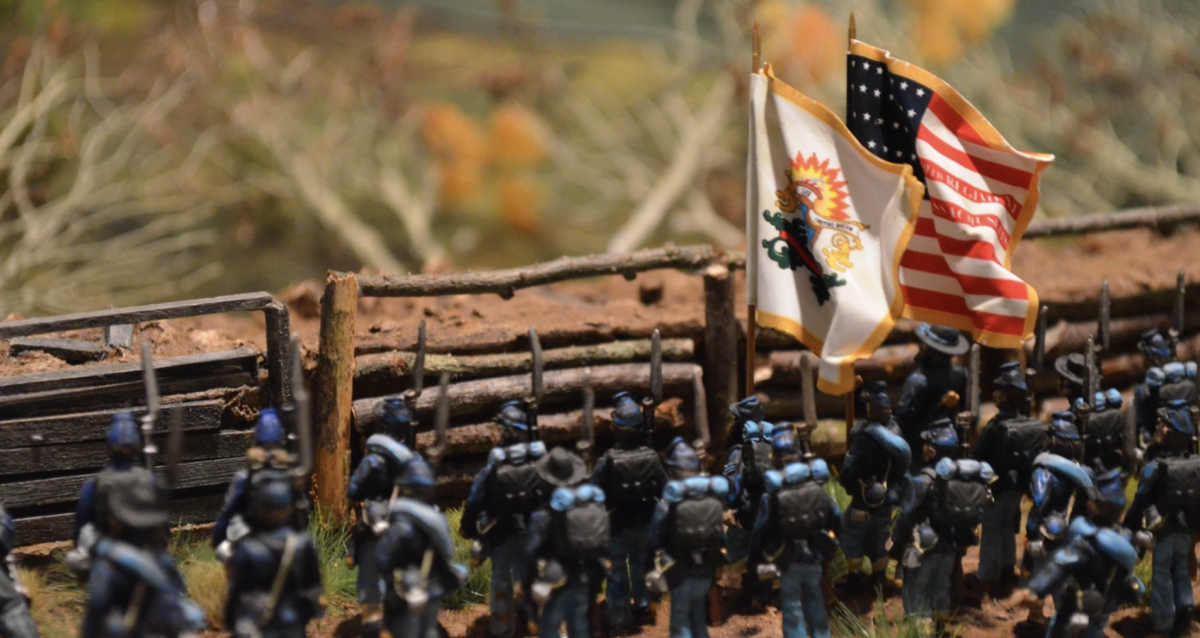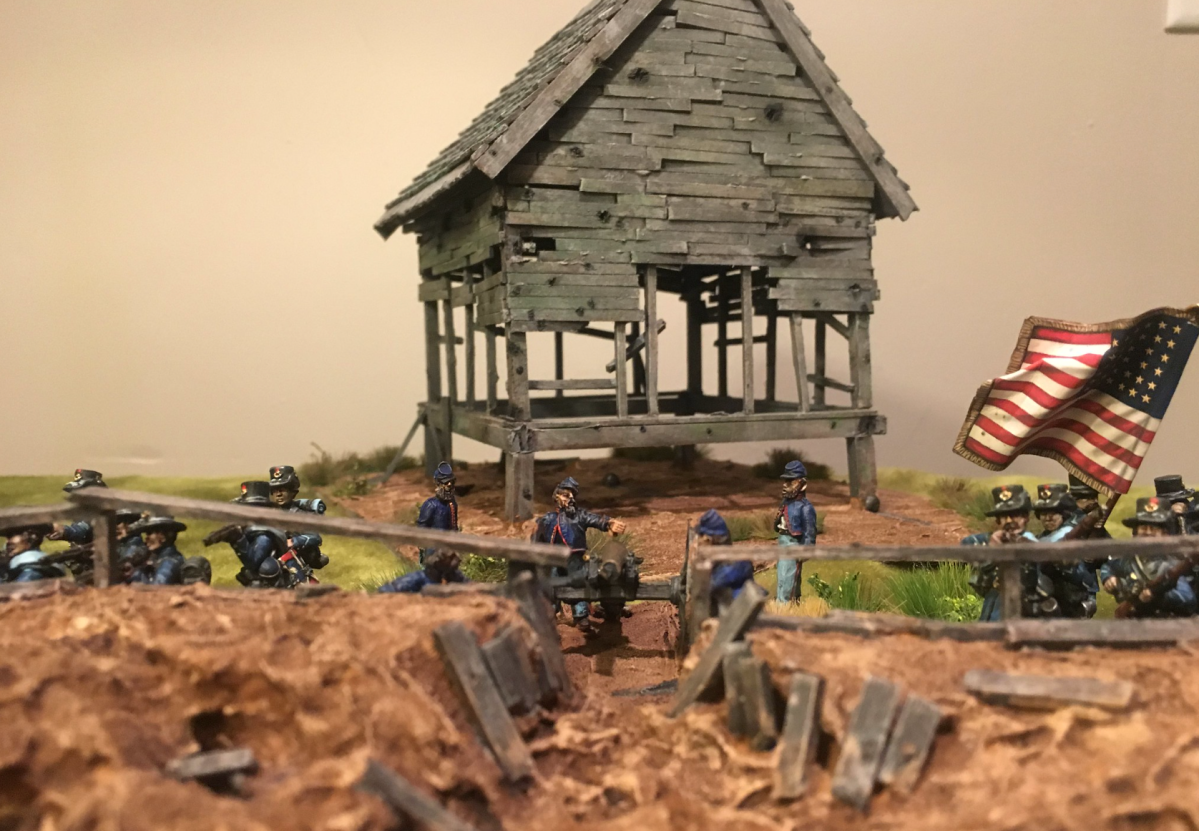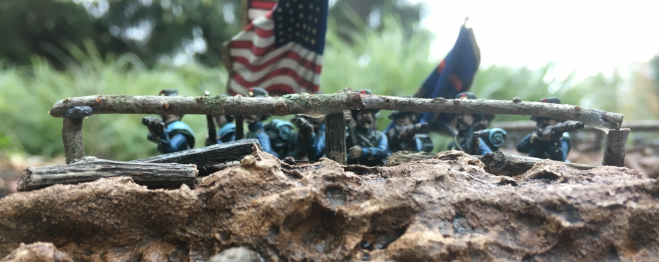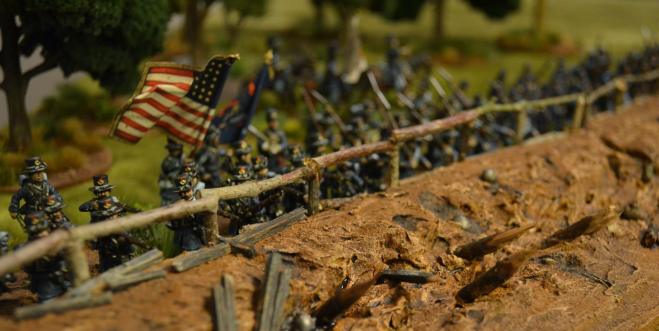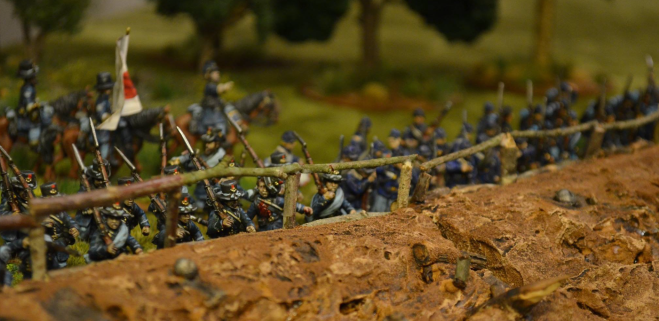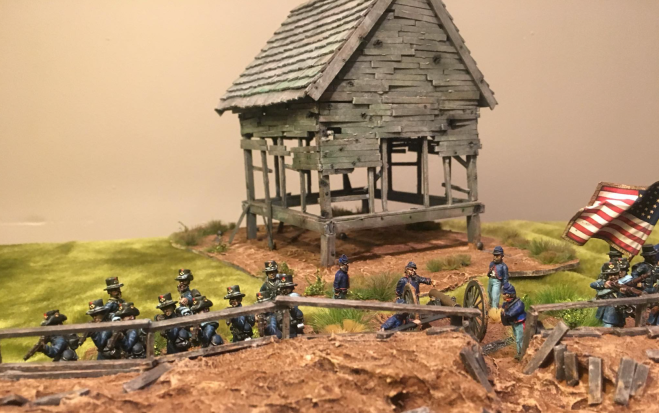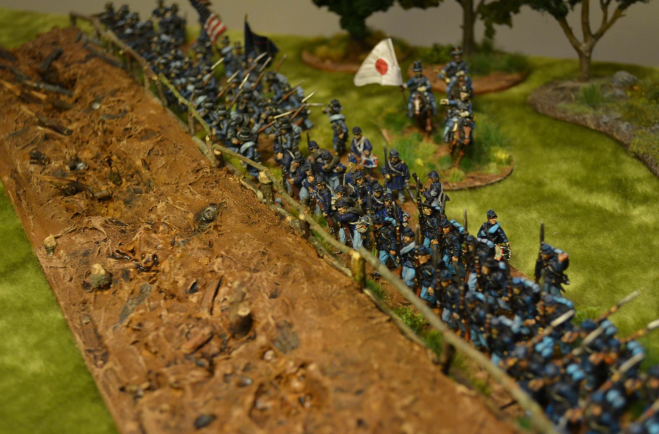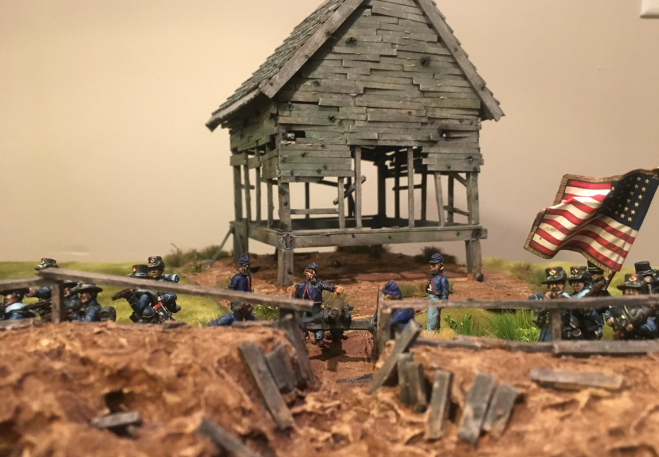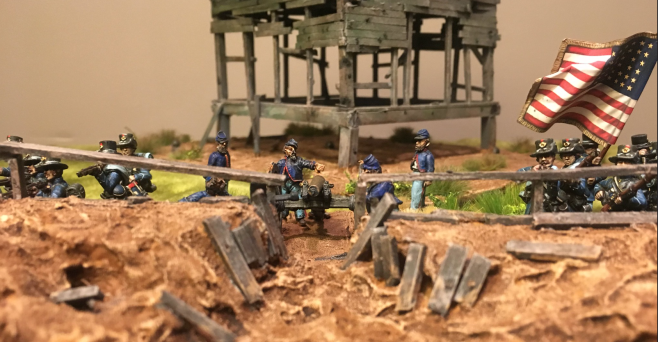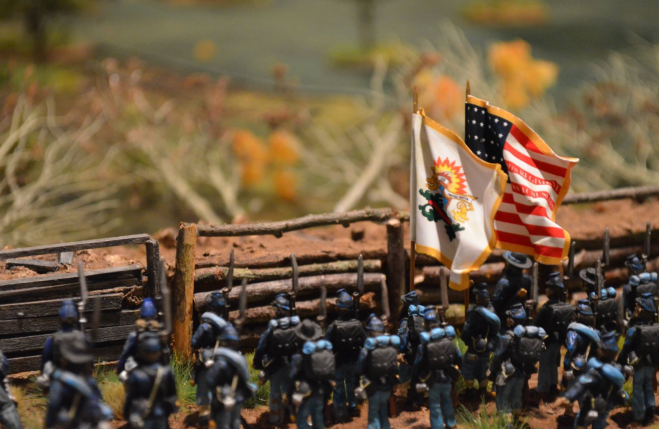These diorama shots of the Federal main line and breastworks at Franklin were created by Rob Rhodes. Make sure to scroll to the bottom to read the poem, Echoes of Sorrow.
Although the main Union line was restored, the Confederates around the gin refused to step down their attacks. They continued to throw themselves at the Federal works with a wild and almost reckless abandon. A Northern soldier recalled how they tried to “shove the headlogs over on our line…” Between the gin and the pike, where so many Federals units converged, the blue-clad soldiers stood five and six deep. Soldiers from Joseph Conrad’s command who had not fled to the rear also joined in to help. Since there was not enough room for all of them along the works, the men in the rear loaded muskets and handed them to the front. The men in front “did nothing but fire.” Once a rifle was fired it was handed back, and the process began anew. For the Confederates on the outside, the relentless fire was more than they could endure. Casualties were appalling. Wounded men gasped for air beneath the piles of dead. Because the Union troops at the front could lean up against the wall of the breastworks, they only had to expose a hand or arm when they fired. On the other hand, the Southern troops cowered in a ditch on the outside and faced an embankment that sloped down at a convex angle. Thus the Rebels had virtually no protection from the enemy fire. Moreover, if they tried to scale the works the men had to expose their bodies just to fire into the enemy trench, and that was possible only if they could get to the crest of the parapet. Many who attempted this were hit on the way up by bullets from beneath the headlogs or gashed by bayonets. Others could fight no more and chose instead to stay in the blood-soaked ditch where they prayed for the horror to pass.
Jacobson, Eric A.. For Cause and Country: A Study of the Affair at Spring Hill & the Battle of Franklin . O’More Publishing. Kindle Edition.
I have estimated that between 1,000 and 1,200 Confederate casualties occurred in this two acre area, with somewhere near 200 Confederate’s outright killed.
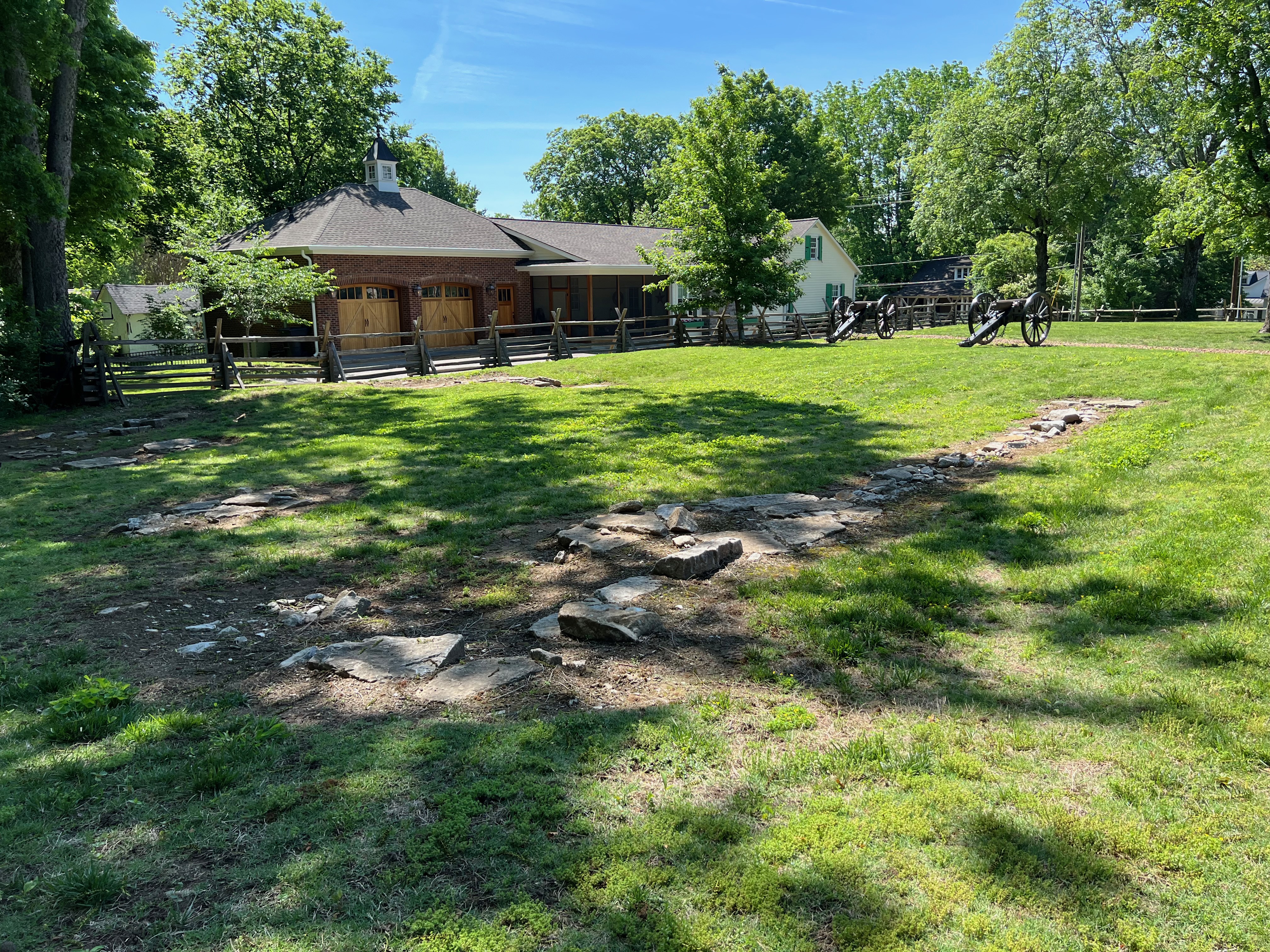
Modern-day location of the gin with extant foundation.
Echoes of Sorrow: The Tragedy of Franklin
In the realm of tragic strife, they stood,
The Union line restored, their spirit grim.
But Confederates, relentless, with wild abandon,
Threw themselves at the works, their hopes so dim.
A soldier, of Northern stock, recalled with pain,
How they sought to push the headlogs o’er.
Between the gin and pike, convergence of fate,
Blue-clad soldiers, five and six deep, they bore.
Joseph Conrad’s command, unwavering in despair,
Joined the fray, no thought of flight in their minds.
But space was scarce upon those battered walls,
So the rear loaded muskets, a duty that binds.
Muskets passed from hand to hand,
Frontline soldiers, their hearts ablaze,
Firing, firing, in endless repetition,
A symphony of destruction in the haze.
For the Confederates, besieged and lost,
The relentless fire a torturous toll.
Appalling casualties, gasping for breath,
Beneath piles of dead, their spirits dole.
Union troops, finding solace on the breastworks,
Leaning against the wall, exposing but a limb.
Their shots rained down upon the foe,
While the Southern troops, cowering, faced a grim.
In the ditch, they sought refuge, the embankment their bane,
No protection from the enemy’s wrath.
To scale the works, a perilous dance,
Exposing bodies to bullets’ deadly path.
Some, attempting the ascent, met their fate,
Beneath headlogs, bullets found their mark.
Bayonets clashed, leaving gashes and wounds,
Their dreams shattered, left in the dark.
Others, weary and drained, could fight no more,
Chose to stay in the blood-soaked ditch.
Prayers whispered amidst the horror’s roar,
Hoping for respite, an end to this wretched pitch.
In this tragic tableau of sorrow and despair,
Where lives were lost, and pain ran deep,
We remember the fallen, their sacrifice so dear,
And the haunting echoes of battles that forever seep.
Source: Kraig McNutt, Copyright 2023.
